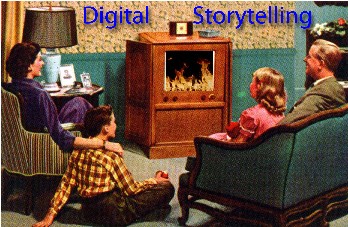| What is Digital Storytelling? |
Digital Storytelling is a method of telling personal stories using digital tools. These are typically stories of personal relevance -- transcendence, transformation, change, of events or people in our lives who have made a difference. Rather than the goal of commercial, corporate media to sell soap, the focus is on hearing the stories of everyday people, the communities in which they live, and the people with whom they share the planet. The belief is that there is empowerment in hearing the stories, as well as empowerment in the telling of the stories. Digital technologies are tools to aid in this ancient human process. Primarily initiated by the multimedia performance work of Dan Atchley and developed by Joe Lambert, founder of the Center for Digital Storytelling in Berkeley, California, USA, the technique has spread across the globe. Contexts have included support in healing and prevention of domestic violence, awareness of HIV, conflict resolution and reconciliation, and self-reflexivity in the college classroom. Digital storytelling focuses more on the stories told, and less on the technical polish of the finished production. Simple digital tools and methods are used, drawing from archival family photographs and artifacts, with the voice of the storyteller favored over that of the polished professional announcer. There are striking similarities between the tenets of digital storytelling and notions of self-reflexivity, oral history, ethnographic methods of social science, and media as tools for building community and affecting personal/social change. With stories rooted in the experience of the storyteller searching for personal or universal human truths, digital storytelling offers a unique method of prompting practical self-reflexivity for people in a variety of personal and cultural contexts. |
